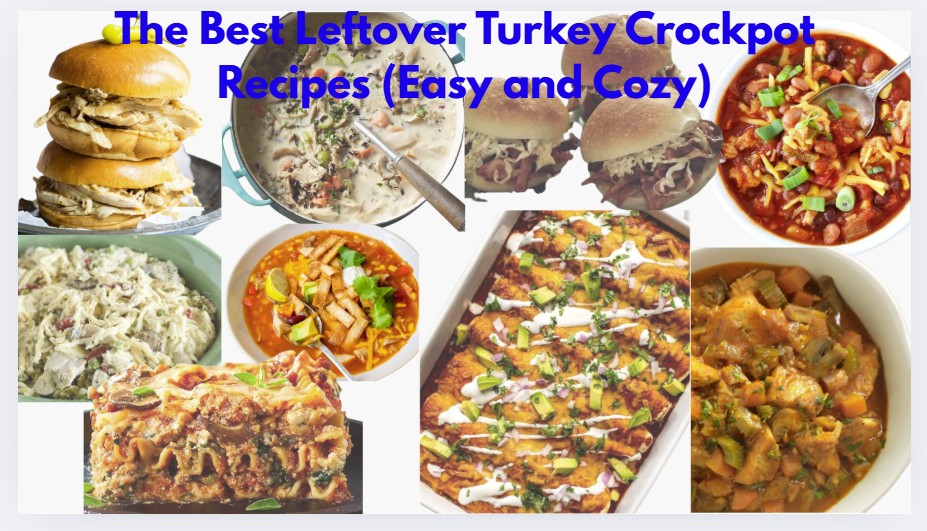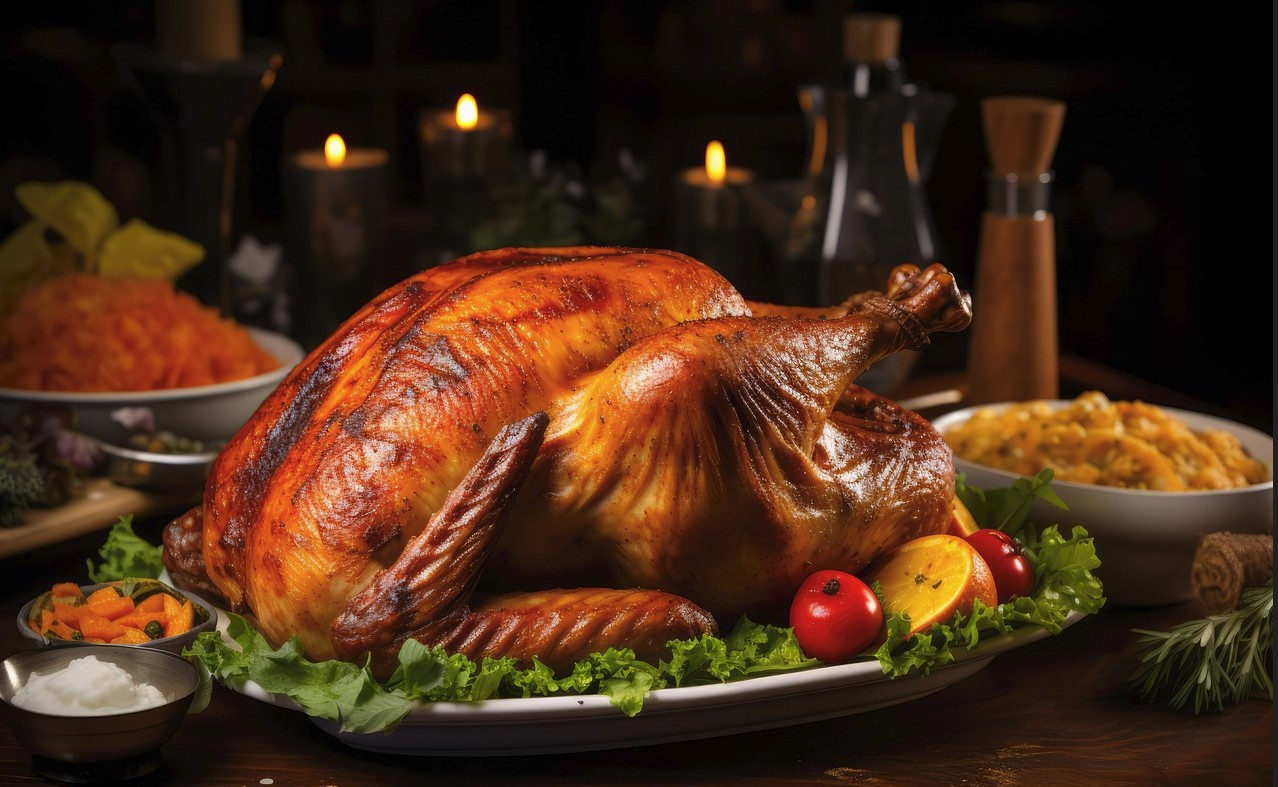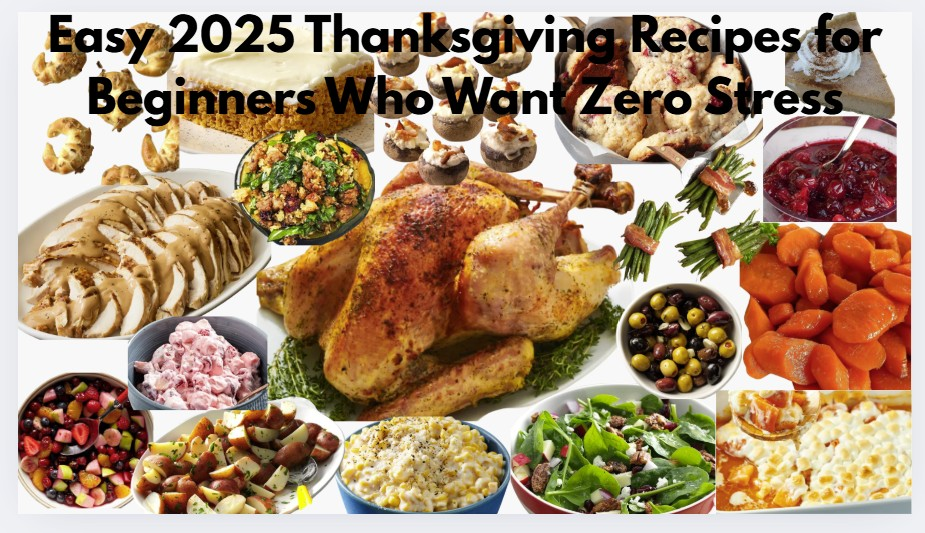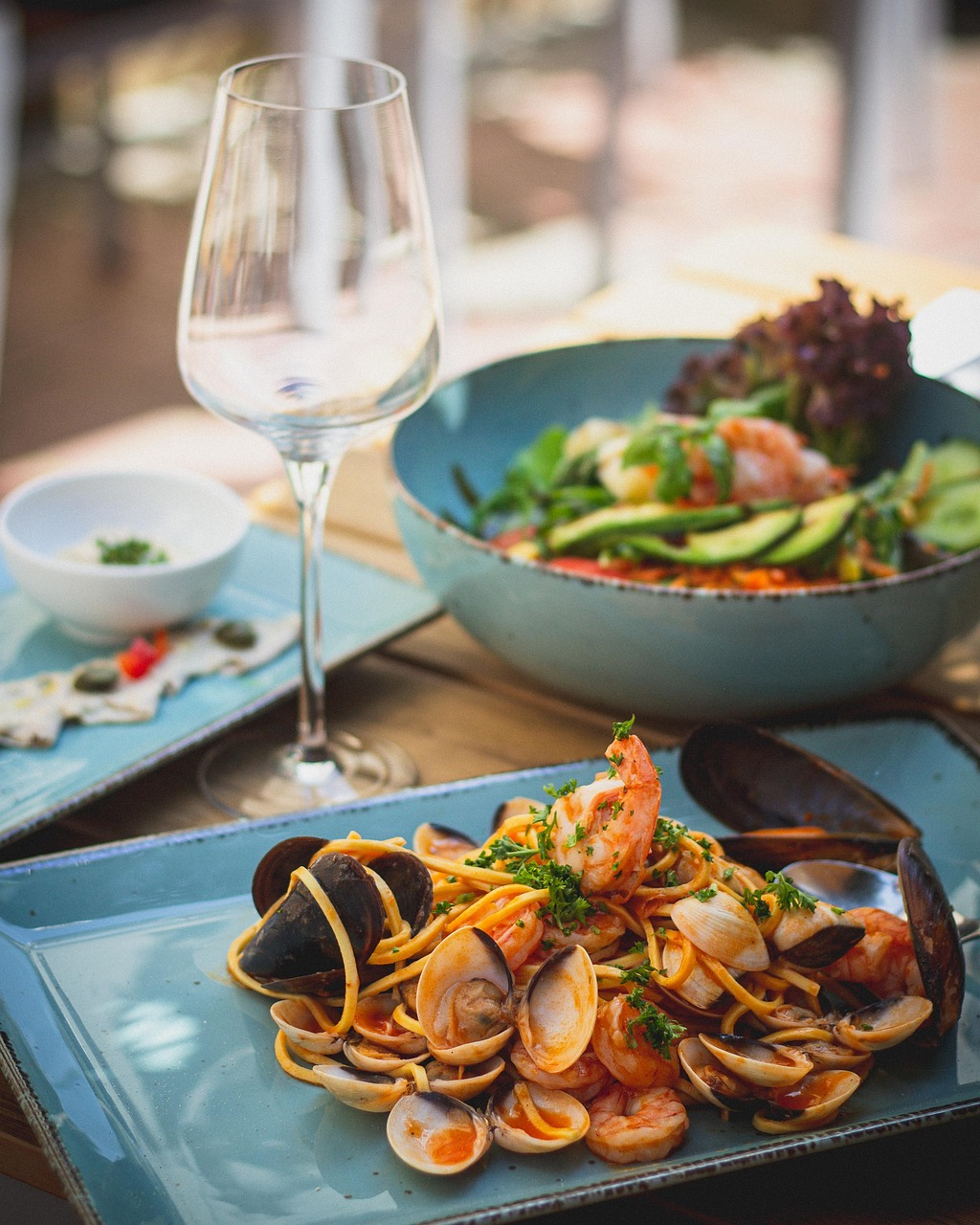Earning money with restaurant reviews isn’t just a dream—it’s a real way to earn some extra cash in 2025. If you enjoy sharing your honest opinions on food, service, and atmosphere, there’s a growing market ready to reward you for your voice.
This opportunity goes beyond just writing online reviews. It’s about turning your passion into a profitable side gig or even a steady income stream. In this post, you’ll find clear, exact steps to get started, plus where to find companies that pay for your restaurant insights and how to make the most of it. Ready to use your foodie know-how to earn? Let’s dive in.

Get Paid For Restaurant Reviews: A Step-By-Step Guide
Turning your love for food into a paycheck starts with following a clear path. Reviewing restaurants professionally means more than just sharing opinions—it’s about delivering useful, engaging, and trustworthy feedback that can help readers decide where to dine. This step-by-step guide highlights exactly how to get started, grow your reputation, and find paid opportunities in this field.
Step 1: Build Your Food Knowledge Base
Understanding food deeply is essential to stand out. Knowing ingredients, cooking methods, flavor profiles, and culture gives your reviews authority and depth. This knowledge lets you describe dishes with vivid detail instead of simple “good” or “bad” labels.
- Take cooking classes locally or online to learn the basics.
- Read books or watch documentaries about world cuisines.
- Explore different restaurant styles, from street food to fine dining, to broaden your experience.
Having this foundation helps you critique meals with confidence and accuracy, making your reviews valuable to readers and potential clients.
Step 2: Develop Strong Writing Skills
Writing well is key to convincing readers and editors that your reviews deserve attention—and payment. Clear, engaging writing that matches your audience’s interests makes your content more shareable and respected.
- Practice writing regularly, focusing on descriptions that appeal to the senses.
- Study top food writers and their style; notice how they balance facts and flavor.
- Consider taking writing courses to improve grammar, style, and voice.
Good writing turns your restaurant visits into stories others want to read, helping you gain followers and attract paying assignments.
Step 3: Choose Your Niche
Specializing helps you carve out a unique place in a crowded market. Narrowing your focus makes your reviews more targeted and authoritative.
Here are some niches to consider:
- Ethnic cuisines, such as Japanese or Mediterranean.
- Dietary focuses like vegan, gluten-free, or keto.
- Dining experiences, including casual cafes, food trucks, or fine dining.
- Budget levels, for instance, affordable eats or luxury dining.
A clear niche makes it easier to grow a dedicated audience and opens up specialized opportunities where your expertise will be in demand.
Step 4: Start Sharing Your Reviews Publicly
You need a platform to showcase your work and build credibility. Starting a blog or an Instagram page helps you collect your reviews in one place and share them widely.
- Use blogging platforms that are easy to set up and customize.
- Post consistently to engage readers and build momentum.
- Include photos, ratings, and detailed notes to strengthen each post.
Your growing portfolio proves your skill to potential clients, making it easier to secure paid gigs.

Photo by Lisa from Pexels
Step 5: Connect and Pitch to Paying Clients
Once you have samples of your best work, start reaching out to publications, food websites, and local magazines that pay for reviews. Having an online portfolio makes pitching easy.
Tips for successful pitching:
- Tailor your pitch to the outlet’s style and audience.
- Highlight your niche expertise and attach relevant samples.
- Be concise and professional but let your passion show.
- Follow up politely if you don’t get a response within a couple of weeks.
Persistence pays off. The more you pitch, the more chances you get to work with paying clients.
Step 6: Join Review Platforms and Freelance Sites
Some websites and apps pay users for detailed restaurant reviews or freelance writing projects. Signing up with these platforms can supplement your income and give you immediate paid opportunities.
Look for:
- Local marketing companies that hire food critics to review partner restaurants.
- Freelance job boards listing food writing gigs.
- Apps that reward users for honest restaurant feedback.
Be careful to read platform terms and find those that pay fairly and value quality reviews.
Following these steps will get you closer to turning your passion for restaurants into paid work. Mastering food knowledge, polishing your writing, finding your niche, and promoting yourself professionally are the building blocks of success in this rewarding area. Keep developing your voice and connections for ongoing opportunities ahead.

Tips To Get Paid For Restaurant Reviews
Getting paid for restaurant reviews requires more than just having an opinion about your meal. It’s about crafting detailed, useful insights that readers and clients value. The goal is to make your reviews look professional, engaging, and trustworthy. Here are some practical tips to help you create reviews that attract paying opportunities.
Do Thorough Research Before You Visit
A great review starts well before you place your first forkful in your mouth. Knowing the background of the restaurant adds depth and credibility to your writing.
- Learn about the restaurant’s history and story, like whether it’s family-run or part of a local tradition.
- Understand their sourcing practices—do they use local, organic ingredients? Are they committed to sustainability?
- Keep an eye on the chef’s background and any signature dishes.
This kind of knowledge helps you paint a fuller picture and shows your readers you’ve done your homework.
Tell Your Experience in Order
Organizing your review chronologically helps readers follow your experience naturally. Walk through the visit step-by-step, from arrival to the last bite.
- Describe the ambiance as you enter.
- Talk about how you were greeted and seated.
- Share your impressions of each course as they come.
- Finish with the overall feeling and final thoughts.
This approach is like telling a story that invites readers to join you on the journey.
Include Key Restaurant Details
Readers want to know practical information, so be sure to include essential facts like:
- Type of cuisine and standout dishes
- Price range, making budgeting easier for readers
- Location with contact details and parking options
- Hours of operation and peak times when reservations are needed
- Size and vibe of the place (family-friendly, romantic, casual)
- Special features (live music, outdoor seating, private rooms)
- Dietary accommodations (vegan options, allergen info, halal-friendly)
Providing these essentials lets readers decide quickly if the place fits their needs.
Use a Clear Evaluation System Beyond Stars
Many publications now avoid star ratings because they can oversimplify a complex experience. Instead, break down your review into specific categories such as:
- Food quality and flavor complexity
- Presentation and plate aesthetics
- Ambiance and comfort
- Service attentiveness and friendliness
- Value for money and portion sizes
- Cleanliness and overall environment
This gives readers a balanced understanding without relying on a single number.
Keep Your Visits Under the Radar
To get honest insights, avoid announcing yourself as a restaurant reviewer. This ensures staff don’t treat you differently and lets you experience the restaurant as a typical guest would. Authenticity builds trust with readers because your account feels genuine and unbiased.
Balance the Good and the Bad
Writing fair reviews means mentioning both what worked and what didn’t. It’s okay to note when a dish was under-seasoned or the seating was uncomfortable. Readers appreciate honesty—it helps them form realistic expectations.
Avoid harsh criticism or rants. Instead, offer constructive comments with tact, such as suggesting how the restaurant might improve an area.
Focus on Your Ordered Items, Not the Whole Menu
Limiting your descriptions to dishes you tried keeps your review focused and accurate. You can highlight recommended or signature dishes but resist listing the entire menu. Readers want context, not a copied menu.
Share your thoughts on taste, texture, and presentation to bring your meal to life.
Be Honest Without Being Harsh
A credible review balances honesty and professionalism. Even if your experience was disappointing, avoid personal attacks or emotional outbursts. Write as if you’re advising a friend rather than complaining. This maintains your reputation and encourages trust from readers and clients.
End With a Clear Recommendation
Your conclusion should summarize your overall take. Mention if you’d return, what you’d order next time, or who the place suits best. A clear recommendation helps guide readers and gives your review a strong finish.
Bonus: Consider Health and Taste Sensitivity
If you want to do this professionally, not having food allergies is an advantage since you’ll try a wide range of dishes. A refined palate helps too, as it allows you to distinguish flavors and textures, making your descriptions richer and more useful.

Photo by Gustavo Fring from Pexels
21 Companies That Will Pay You For Food Reviews
If you want to turn your appetite and writing skills into a source of income, pitching your food reviews to magazines and websites that pay freelancers is a smart move. Many companies actively seek fresh voices with a unique viewpoint on food, dining, and culinary culture. They offer competitive pay and opportunities to reach engaged food-loving audiences.
Below is a carefully gathered list of 21 companies where you can submit your food and restaurant-related content and get paid for your reviews. Each outlet has its own style, rates, and guidelines, so take note of what fits your voice best and start pitching.
1. Bon Appetit
Bon Appetit is a well-known food magazine that publishes monthly editions centered on food lifestyle, including recipes, restaurant recommendations, and food culture. With a starting rate around $250 for a 400-word feature, it’s a solid paying option for food writers.
For restaurant-related stories, send pitches to [email protected]. Their website offers detailed submission guidelines to help you craft your pitch professionally.
2. Catalyst
Based in Salt Lake City, Catalyst is a creative living magazine focusing on healthy and organic foods, sustainability, gardening, and food security. They favor thoughtful, community-driven articles that explore the relationship between food and environment.
3. Clean Eating
Clean Eating delivers content on real food for a healthier lifestyle. They welcome pitches through direct contact with their editorial team. The magazine leans into nutrition and clean food trends, making it ideal for writers who blend food and wellness.
4. Disney Food Blog (DFB)
If you love Disney’s food offerings—from theme parks to cruise ships—Disney Food Blog is a great platform. It features detailed reviews and insider info on all things edible related to Disney. They accept guest posts through their submission process detailed on their website.
5. Down East
Down East Magazine showcases the culture and lifestyle of Maine, with a dedicated dining review section. While their regular writers cover most reviews, they are open to pitches—especially stories tied to Maine’s culinary scene. Note their three-month lead time and check writer’s guidelines before submitting.
6. Eater
Eater, under Vox Media, is a go-to source for food news, dining guides, and cultural food trends. They accept pitches and pay competitively based on assignment scope. Their topics cover everything from restaurant openings to foodtech innovations.
Learn how to pitch to Eater on their website.
7. Edible Communities
This group of 75 regional magazines across the US and Canada focuses on local food stories and community connections. Rates and needs vary by region. For instance, Edible Manhattan looks for pieces about Manhattan’s dining culture and adjusts pay per writer experience.
8. Epicure & Culture
This online magazine focuses on food, wine, and travel, emphasizing sustainability and ethics. They welcome freelance contributions and offer $10 per published article, plus social media promotion and a backlink. Submission details are available on their site.

9. Extra Crispy
Extra Crispy covers morning food culture—breakfast recipes, food news, and breakfast travel. If your pitch relates to breakfast or morning meals, they provide a detailed pitch guide to help you land a spot.
10. Feast
St. Louis-based Feast dives into the local culinary scene, including craft breweries, distilleries, and restaurants. To pitch, send three to five writing samples to managing editor Mary Andino at [email protected].
11. Food52
Food52 is a broad site centered on the kitchen as the heart of the home. They’re a leader in food, cooking, and lifestyle content. You can pitch ideas via email ([email protected]), with comprehensive pitching instructions on their site.
12. Gastronomica
Published by University of California Press, Gastronomica explores food history, culture, and social context. They seek submissions that thoughtfully engage with food’s broader impact. Submission guidelines are posted on their website.
13. Healthyish
A Bon Appetit spin-off, Healthyish publishes healthy, tasty recipes and wellness-oriented food articles. Their general pitch guidelines are public, and they encourage writers promoting balanced, flavorful eating.
14. Radish Magazine
Radish Magazine targets natural foods and lifestyle content mainly for readers in western Illinois and eastern Iowa. If you have regional, health-focused food stories, pitch editor at [email protected]. Their writer’s guidelines detail expectations.
15. San Antonio Current
This media company covers local news and culture in San Antonio, Texas, including food and nightlife. They welcome freelance food writers; pitches go to Food + Nightlife Editor Nina Rangel. Submission instructions are online.
16. Saveur
Saveur centers on world cuisines, cooking, wine, and travel. Proposals should include article summaries and execution plans, sent to [email protected]. Articles about food travel or international cooking perform well here.
17. Taproot
Taproot magazine prefers article ideas sent as Word documents to [email protected], with the issue theme as the subject line. Their FAQ covers submission details and topics they favor.
18. Travel + Leisure
Travel + Leisure covers food, wine, lodging, and travel adventures. Their website offers an extensive pitching guide, perfect for writers who can connect food with broader travel experiences.
19. Well + Good
A trusted digital health and wellness outlet, Well + Good uses many freelance writers. They pay between $150 and $500 depending on the article and sources. Their website hosts a full pitching guide.
20. Whole Life Times
Whole Life Times focuses on progressive holistic health and metaphysics, publishing bimonthly. They pay $75–$150 depending on content. Queries go to [email protected], and writer guidelines are available on their site.
21. Wine Enthusiast
Wine Enthusiast provides content on wine lifestyle products and wine reviews. Freelancers pitching must craft a compelling reason for their assignment. Rates start at 50 cents per word digitally, with pitching guidelines accessible online.

Photo by Armin Rimoldi
Each of these outlets provides a unique angle on food writing and restaurant reviews. To maximize your chances, tailor your pitches carefully, follow their guidelines, and show why your voice adds value. With persistence and quality work, you can build a steady income by sharing your honest food experiences.
Best Ways To Monetize Your Restaurant Reviews
If you’ve built a collection of solid restaurant reviews and want to turn your passion into profit, there are several proven ways to do that. Monetizing your reviews isn’t just about placing ads; it’s about creating value that readers and businesses are willing to pay for. Below are some practical methods that can help you earn from your restaurant reviews while keeping your content engaging and trustworthy.
Advertising: Let Your Reviews Pay You Back
One of the most common ways to monetize is by selling advertising space on your blog or website. Partnering with an ad server like Google Ad Manager lets you display relevant ads automatically.
- Why use an ad server? It manages ads for you, maximizes your earnings, and saves you time.
- Direct ad sales: If you prefer, approach local restaurants or food-related businesses to sell banner or sidebar ads directly. Local businesses often appreciate the targeted exposure.
While ad revenue can start small, consistent traffic to your reviews will increase your monthly earnings gradually. Remember, the trick is to keep ads relevant and non-intrusive to retain your audience.
Sponsorships: Paid Reviews That Build Relationships
Sponsored reviews bring in more income per post than regular ads, but they come with responsibility. You agree to review a restaurant in exchange for a fee, but transparency is key.
- Clearly label sponsored content with disclaimers like “Sponsored Review” at the top.
- Keep your honesty intact—the balance between being fair and meeting sponsor expectations is essential for credibility.
- Start locally by reaching out directly to restaurants about sponsored content options.
If you maintain integrity, sponsored posts can turn into ongoing partnerships that provide steady monthly income.
Online Directories: Charge for Premium Listings
Adding a restaurant directory alongside your reviews offers another way to earn. When your directory draws significant visitors, restaurants will want to be featured prominently.
- Offer premium listings that include photos, business hours, menus, and special offers.
- Make sure your directory provides unique value—be more detailed or updated than general search listings.
- This model works well if your reviews and online presence bring a steady stream of readers.
Businesses appreciate gaining visibility in a trusted directory created by a local expert.

Digital Products: Your Reviews as Guides People Will Buy
Have you thought about packaging your best restaurant experiences into ebooks or city guides? This creates a product that food lovers or tourists can buy.
- Organize your reviews into helpful categories like neighborhoods, cuisine types, or price points.
- Highlight insider tips like hidden dishes or quiet hours.
- Digital products create a one-time or recurring income stream, especially if updated regularly.
Creating a guide positions you as an expert and lets your audience carry your recommendations on the go.
Membership and Subscription Models: Earn from Exclusive Access
If you have a loyal following, consider launching a membership or subscription that offers exclusive content.
- Lock valuable content—such as in-depth reviews, video tastings, or early access—behind a paywall.
- Provide members-only perks like discounts with partner restaurants or personalized dining suggestions.
- This model requires consistent quality but builds a predictable monthly revenue.
Your most engaged readers will happily pay to support your work and enjoy premium access.

Photo by RDNE Stock project
Each method works best when tailored to your audience size and style. While ads can provide passive income, sponsored reviews and premium services often bring higher returns. Combining several strategies can create a balanced revenue mix as you grow your restaurant review platform.
Maximize Earnings and Stay Ethical
Making money from restaurant reviews is definitely doable, but you need a solid plan to set fair rates, keep your work legal and trustworthy, and grow your influence. The way you balance earning and ethics can shape your entire career. Let’s break down how to price yourself, follow rules, and build a better platform.
Set Competitive Rates and Negotiate
Deciding what to charge for your reviews can feel tricky at first. You want to be paid fairly without scaring off potential clients. Start by researching what others charge in your niche and region. Look at food bloggers, freelance writers, and local publications to get a sense of the going rate.
- Consider your experience: If you’re just starting out, set introductory prices but plan to increase them as your portfolio grows.
- Value your unique perspective: Your knowledge of cuisine, writing quality, and audience size all add to your worth.
- Package your offers: Instead of charging per review only, offer bundles that include photos, social media posts, or extended content.
- Be ready to negotiate: Clients will sometimes push back on price. Express clearly how your work benefits them and be open to finding a middle ground.
Often, a simple conversation that explains the value you bring will help clients see what your rates include. Remind them that quality reviews create trust and draw customers to their business.

Photo by Pavel Danilyuk
Adhere to FTC Disclosure and Authenticity
Ethics matter a lot in restaurant reviewing. Both readers and brands expect honesty, and the law backs rules on transparency. The Federal Trade Commission (FTC) requires you to disclose any paid partnerships clearly. This means if a restaurant pays you or provides a free meal for your review, you must say so plainly.
- Use clear labels like “Sponsored,” “Paid Partnership,” or “Gifted Meal.”
- Be honest in your content. Avoid overhyping or hiding flaws just because you were compensated.
- Keep your voice authentic. Readers follow you because they trust your candid opinions.
- Don’t accept offers that ask you to write false reviews or withhold key information.
Staying ethical isn’t just about following rules — it builds your reputation as a reviewer who can be trusted by both the public and brands. Once your honesty is known, you’ll likely see better, longer-lasting partnerships.
Grow Your Influence for Better Opportunities
Your earning potential grows with your influence. Brands look for reviewers with engaged audiences and consistent, high-quality content. How do you get there? Focus on these:
- Consistency: Post reviews regularly to keep your followers interested and coming back.
- Engagement: Answer comments, pose questions, and invite feedback. Active communities attract brands.
- Networking: Connect with other food writers, local businesses, and marketing professionals both online and offline.
- Quality: Sharpen your writing, use good photos, and present your experiences clearly.
As your reach and trustworthiness grow, companies will be more willing to pay higher rates or invite exclusive deals. Think of your influence as an investment: the more care you put into it, the more it will pay off in bigger gigs and better compensation.
Your fees and partnerships will reflect how much value you create beyond just the words on a page.
FAQs On How To Get Paid For Restaurant Reviews
If you’re ready to turn your passion for dining into income, you likely have a few questions about the process. Getting paid for restaurant reviews may sound straightforward, but there are details that can shape your success. Here’s a clear look at common questions and honest answers to help you move forward with confidence.
How Do I Start Getting Paid for Restaurant Reviews?
Begin by building a solid portfolio of honest, well-written reviews posted on a blog or social media channel. Authenticity matters most. Once you have samples, you can approach publications, brands, or platforms that pay for this kind of content. Many review sites and freelance markets also offer straightforward ways to get gigs without prior connections.
Are Free Meals or Discounts Considered Payment?
Often, restaurants offer free or discounted meals in exchange for a review. While this can count as compensation, transparency is key. If you accept a free meal, disclose it clearly in your review. Free meals help save costs but don’t replace actual payment, which typically comes from brands or platforms commissioning your work.
Can Anyone Get Paid, or Do I Need Special Skills?
You don’t need formal culinary training, but having a good palate, solid writing skills, and reliable consistency helps. Clients want reviews that offer useful insight, clear descriptions, and balanced opinions. Practice is important: the better you write and the more knowledge you show, the easier it is to attract paying work.

How Much Can I Expect to Earn?
Rates vary widely. Some platforms pay small amounts ($5–$20) per review, especially at the start. Established freelancers and bloggers can earn $100 or more per article depending on length and outlet. Sponsored reviews with restaurants or brands may pay even higher fees. Expect income to grow as your reputation and reach expand.
Which Platforms or Companies Are Legitimate?
Look for sites with transparent payment terms and good reviews from contributors. Avoid platforms that ask for fees upfront or promise unrealistic earnings. Reputable freelance job boards, food magazines, and websites focusing on restaurant content are ideal places to pitch and accept assignments.
How Important Are Photos or Videos in Paid Reviews?
Visual content often boosts the appeal and value of your review. Many paying clients prefer or require high-quality photos of dishes and the dining space. Learning basic food photography or using your smartphone well can greatly increase your chances of landing paid reviews.
Is Getting Paid for Reviews Legal and Ethical?
Yes, but you must always disclose paid partnerships or gifts per FTC guidelines or local laws. Transparency maintains trust with your audience and brands. Avoid false or misleading reviews; honesty protects your credibility and helps build lasting professional relationships.
How Do I Pitch to Restaurants or Publications?
Craft a brief, friendly pitch that highlights what you offer and why your review matters. Include links to your best work and any audience stats that show your reach. Tailor your message to the outlet’s style. Following up politely after a week or two improves your chances.
Can I Turn Restaurant Reviewing Into a Full-Time Job?
Many treat it as a part-time or freelance opportunity, but with dedication, it can become a significant income source. Expanding to multiple outlets, monetizing your own platform, and creating related content (like videos or guides) helps increase earnings.

Photo by Leeloo The First from Pexels
What Are the Common Mistakes to Avoid?
- Accepting free meals but not disclosing them, which can damage trust.
- Writing overly vague or generic reviews without details to set you apart.
- Pitching without samples or a clear niche.
- Ignoring deadlines or client instructions.
- Using poor-quality photos or no visuals at all.
Avoiding these pitfalls keeps you professional and attractive to paying clients.
How Do I Keep Up Momentum and Grow?
Build relationships with editors and restaurant owners. Keep posting regularly and engage with your readers. Track your performance and audience preferences to improve. Use feedback to sharpen your style and presentation. The more you deliver reliable, thoughtful reviews, the more doors open.
This FAQ gives you a practical snapshot of what to expect when aiming to get paid for restaurant reviews. Keep your focus on honesty, quality, and professionalism, and you can steadily turn this hobby into income.
Do Food Reviewers Get Paid?
If you’ve ever wondered whether food reviewers actually earn money or if it’s just a fun hobby, here’s the straightforward answer: yes, food reviewers do get paid. Many professional reviewers make a solid living from their work, with salaries ranging widely based on experience, location, and platform.
While at first, it might seem like a dream job (getting paid to eat), the reality involves serious skills and dedication. The income potential varies, but experienced food critics in major cities often earn between $80,000 and $90,000 per year. That’s not just pocket change—it’s a respectable career for those who combine their passion with professionalism.
The path to paid restaurant reviewing isn’t as mysterious as it sounds. It involves building a reputation, mastering clear and honest writing, and finding clients or platforms that value your insights. Below, we’ll break down how food reviewers get paid and what to expect from this unique line of work.
How Food Reviewers Typically Get Paid
Payment isn’t usually as simple as showing up and eating for free. The process involves several common models, depending on where you work:
- Freelance Articles and Blog Posts: Many reviewers write for magazines, newspapers, or online food sites. These outlets pay per article or word, with rates increasing as your reputation grows.
- Sponsored Reviews: Some restaurants or food brands pay reviewers to try their offerings and publish a sponsored piece. Transparency matters here—you’ll need to disclose any compensated posts.
- Review Platforms & Apps: Certain companies offer small payments or rewards for submitting detailed reviews of restaurants through their platforms. This income can add up but rarely replaces full-time earnings.
- Affiliate Links and Advertising: If you run a popular review blog or YouTube channel, affiliate marketing and ads can generate indirect income based on your audience’s engagement.
- Social Media Partnerships & Influencer Deals: Food reviewers with large followings might get paid for posts or collaborations promoting restaurants.
What Influences How Much Food Reviewers Earn?
Several factors shape earnings in this field:
- Experience and Writing Quality: Skilled writers who can craft vivid, trustworthy reviews command better pay.
- Audience Size and Engagement: More followers or readers mean more influence and opportunities.
- Niche or Specialization: Reviewers focused on ethnic cuisines, dietary trends, or fine dining often find higher-paying gigs.
- Geographic Location: Reviewers in major urban centers where dining scenes are competitive tend to earn more.
- Type of Employer or Platform: National magazines tend to pay better than smaller local outlets, but the latter can provide consistent work.
Common Challenges to Getting Paid as a Food Reviewer
Landing paid gigs might take time, especially in the beginning, as you build credibility. Reviewers often start with unpaid or low-paid assignments just to create a portfolio. Those free meals? They’re perks but not payment. True earning requires:
- Solid Writing Samples
- Consistent Delivery and Reliability
- Clear Disclosure of Conflicts of Interest
- Marketing Yourself to Editors and Restaurants
Additionally, ethical considerations come into play: being paid doesn’t mean you should sugarcoat a bad experience or risk your audience’s trust.
Can Anyone Become a Paid Food Reviewer?
While it’s possible to break in without food training, strong writing and a passion for cuisine help a lot. A refined palate and attention to detail make your reviews stand out. But you don’t need a culinary degree to succeed; many top reviewers started simply by sharing honest, engaging insights on platforms like blogs or Instagram.
If you’re organized, can express your food experiences clearly, and maintain integrity, you can build a paying career. The exciting part is that food reviewing blends creativity, curiosity, and a chance to explore the culinary world while getting paid for your time.

Photo by Gustavo Fring from Pexels
Why Do a Restaurant Review?
Writing a restaurant review does more than just share your dining experience—it helps shape how people choose where to eat. With so many restaurants competing for attention, a well-crafted review can make a place stand out or warn diners about what to expect. If you’ve ever scrolled through reviews before booking a table, you already know just how powerful these opinions can be.
But the value of a restaurant review isn’t only for the reader. If you’re interested in getting paid for reviews, understanding why they matter will help you create content that both informs your audience and attracts paying clients.
Guide Diners in Their Food Choices
People rely on reviews to find restaurants that fit their tastes and budgets. A detailed, honest review gives insight into the:
- Flavor and quality of the dishes.
- Atmosphere and comfort of the space.
- Friendliness and attentiveness of the staff.
- Value for money and portion sizes.
Good reviews act as personal recommendations, reducing the guesswork that comes with trying a new spot. When readers trust your judgment, they value your opinion and keep coming back for guidance.
Help Restaurants Improve
Feedback from reviewers lets restaurants understand what they’re doing well—and where they could improve. Constructive criticism, shared respectfully, can lead to better menus, friendlier service, or a more welcoming environment. Your review becomes not just a snapshot of your visit, but a useful tool for business growth.
Some restaurants actively seek out reviews because they want honest opinions. Being clear and specific about your experience shows professionalism, standing out from vague or overly general feedback.
Build Your Credibility as a Reviewer
Each review is a chance to develop your voice and authority in the food scene. Careful observation and thoughtful writing set you apart from casual commenters. When your reviews are reliable and engaging, publications and brands are more likely to hire you for paid work.
Think of your reviews as stepping stones. The more quality content you publish, the better your reputation. You want readers and businesses alike to recognize your name as trustworthy and knowledgeable.

Influence Dining Trends and Community Choices
Reviews can highlight hidden gems or call attention to emerging trends. Whether it’s a new farm-to-table restaurant or a street food stall doing things differently, your words can shine a light where it’s due. Readers often look to reviewers for updates on what’s fresh and worth trying.
The power here is real—you’re helping shape what catches on in your local dining scene. That influence can open doors to paid partnerships, invitations to special tastings, or media features.
Make Restaurant Dining More Accessible
A thoughtful review covers more than just taste—it can explain accessibility, dietary options, and other practical details.
Listing if a restaurant has:
- Vegan, vegetarian, or gluten-free menus.
- Wheelchair access or child-friendly spaces.
- Quiet seating for business meetings or casual chats.
Including these details serves readers who have specific needs, making dining choices easier for a wider audience. This kind of comprehensive review often commands more respect and can lead to better-paying opportunities.

Photo by Adrienn
Provide Content That Brands and Platforms Value
Businesses and review platforms pay for quality content that helps sell an experience. Your detailed, honest, and clear restaurant reviews contribute this valuable asset. Paid clients want reviews that inform potential customers and encourage engagement.
It’s not about writing puff pieces. It’s about being fair and specific—offering readers a clear sense of what a visit will feel like. This kind of review builds trust with readers and clients, forming the foundation for paid work.
Writing restaurant reviews taps into an essential function in the food world: guiding diners, assisting businesses, and shaping the culinary landscape one visit at a time. When you understand why reviews matter, you’re better prepared to offer value through your writing—and get paid for it.
What Is The Best Restaurant Review Platform?
If you’re aiming to get paid for restaurant reviews, choosing the right platform matters. The best platform won’t just host your reviews; it will offer visibility, credibility, and sometimes even direct payment opportunities. A good platform is like a stage where your voice as a food critic can reach the right audience.
Among the many ways to share your dining experiences, some platforms stand out because they combine user engagement, business relevance, and monetization prospects. Below, I’ll break down the top choices that fit different goals—whether you want to build a public profile, connect with paying clients, or get rewarded directly for your opinions.
Yelp: The Most Popular and Trusted App
Yelp often tops the list when it comes to restaurant reviews. Millions use it daily to find places to eat, making it a huge stage for your voice. What makes Yelp ideal?
- Wide Audience: Reviews posted here get seen by locals, tourists, and restaurant managers. This exposure can boost your reputation fast.
- Business Info at Your Fingertips: Yelp provides comprehensive details about restaurants—menus, hours, photos, and user ratings—that help you add context to your reviews.
- Community and Influence: Active users build followings and can earn “Elite” status, giving reviews extra visibility.
- Review Transparency: Yelp’s policies encourage honest and current feedback, which adds credibility to your writing.
However, Yelp itself doesn’t directly pay reviewers—but it can be a powerful tool to build your portfolio and attract freelance clients or sponsorships with restaurants who notice your work.
TripAdvisor: Great for Travel-Focused Foodies
If you review restaurants while exploring new cities, TripAdvisor is the go-to platform. It blends restaurant feedback with other travel services, drawing users looking for a full travel experience.
- Huge Volume of Reviews: Being active here means your content reaches travelers planning vacations or business trips.
- Verified Reviews System: TripAdvisor asks for booking or visit confirmation sometimes, which adds trustworthiness.
- Potential for Paid Opportunities: Some travel and food brands watch TripAdvisor reviews for authentic voices to work with on sponsored projects or campaigns.
TripAdvisor suits reviewers who want to blend food writing with travel insights, or who target audiences seeking global culinary experiences.
Zomato: Focus on Food and Dining Culture
Zomato (popular in many countries) combines restaurant listings with user-generated reviews. Its simple design keeps food front and center.
- User-Friendly Interface: Perfect for quick reviews and photos.
- Offers and Promotions: Some businesses use Zomato for marketing, which can open doors for paid partnerships.
- Local Reach: Zomato’s focus on local dining scenes means your reviews can impact your neighborhood’s restaurant scene directly.
While Zomato isn’t as expansive as Yelp in some regions, it’s growing fast, especially in Asia and the Middle East, and offers unique opportunities for food reviewers working in those markets.
Google Reviews: Accessibility and Influence
Google Reviews don’t make the list because of being foodie-centric, but because of sheer influence.
- Ubiquitous Presence: When people search for restaurants, Google reviews often appear front and center in search results and maps.
- SEO Benefits: Writing strong reviews on Google improves your online visibility and can boost your personal brand.
- Business Interaction: Restaurants frequently monitor reviews here, so good relationships and visibility might lead to paid gigs or invites for sponsored reviews.
For those focused on maximizing reach and influence, Google Reviews is a tool you shouldn’t overlook.
Paid Review Platforms and Apps
If getting paid directly is your priority, some platforms connect reviewers with payment opportunities:
- ReviewStream: Pays for detailed, well-written reviews, including restaurants.
- Slice the Pie: Pays users to review new songs, but also offers food-related products occasionally.
- Field Agent: A task-based app that pays for reviews and photos at specific restaurants or stores.
- Paid surveys or freelance gigs via Upwork and Fiverr: These sites offer restaurant review tasks from various clients looking for short-term hires.
While payouts here vary and often start small, these platforms offer an easy entry point to start earning from your reviews.
Which Platform Should You Choose?
Your best pick depends on your goals:
- To build a public reputation and influence, focus on Yelp, TripAdvisor, or Google Reviews.
- To combine food and travel, TripAdvisor shines.
- For local impact and growing food culture connections, Zomato fits.
- For direct payment opportunities, explore specialized review apps or freelance marketplaces.
Many successful reviewers use a combination — posting on public platforms to grow following and credibility, while applying for paid gigs on freelance sites or working directly with restaurants.
Getting paid for restaurant reviews starts by getting noticed and trusted. The right platform is your stage, your portfolio, and your network all in one.

Photo by Pavel Danilyuk from Pexels
How To Become A Food Critic And Get Paid
Turning your love for tasting and sharing food opinions into a paid job is rewarding but requires thoughtful steps. Being a food critic isn’t just about writing “this was good” or “this was bad.” It means developing expertise, refining your writing, and finding the right opportunities to get noticed by publications or platforms willing to pay for your insights. Below, you’ll find a straightforward guide on how to build this career, one step at a time.
Get Educated On Food and Reviewing Skills
Strong knowledge beats just liking food. Learning culinary basics and the vocabulary to describe flavors and textures will make your reviews more credible. Consider:
- Taking cooking classes or online food appreciation courses.
- Reading about different cuisines and food culture.
- Following professional food critics and noting how they describe dishes, ambiance, and service.
Improving your understanding turns your reviews from casual thoughts into expert commentary readers and editors respect.
Gain Experience and Write Independently
Start writing reviews on your own blog, social media accounts, or platforms like Medium. This helps you:
- Practice expressing your opinions clearly and engagingly.
- Build a portfolio that showcases your style and reliability.
- Experiment with different writing tones to see what fits you best.
Consistency is key—post regular, honest reviews that highlight your growing palate and writing skills.

Photo by Kampus Production
Research The Skills Needed To Be A Food Critic
Being a successful food critic depends on more than taste buds and opinions. Key skills include:
- Observation: Noticing details about food presentation, service, and restaurant atmosphere.
- Writing: Clear, descriptive, and engaging storytelling that holds readers’ attention.
- Critical thinking: Evaluating meals fairly, balancing positives and negatives without bias.
- Sensitivity to flavors: Identifying ingredients, textures, and cooking methods.
- Ethics: Honesty and transparency, especially when receiving free meals or payment.
Understanding these skills lets you target areas to improve and shows professionalism when pitching to clients.
Pitch Your Work To Publications and Editors
Once you have a solid set of samples, approach magazines, websites, or local newspapers that accept freelance reviews. Successful pitching includes:
- Researching the outlet’s style and audience.
- Writing a short, focused email introducing yourself and what you can offer.
- Attaching links to your best work or including concise writing samples.
- Showing enthusiasm without overselling yourself.
Editors appreciate writers who respect deadlines, follow guidelines, and offer fresh perspectives.
Work With Restaurants and Food Platforms
Some restaurants or marketing agencies pay reviewers for sponsored posts or honest feedback. You can:
- Reach out to local eateries to propose reviews in exchange for payment or perks.
- Join review sites or apps that offer payments for thorough, quality reviews.
- Build relationships with food tourism boards or event organizers for paid gigs.
Always disclose any compensation to keep reviews trustworthy.
Becoming a paid food critic means treating reviewing like a craft. You combine knowledge, writing, and networking to turn dining into a career. With steady effort and a genuine voice, your critiques can earn you more than just dinner—they can build a sustainable income stream.
How Do I Become A Food Review Blogger?
Starting a food review blog opens a door to sharing your dining experiences and opinions while building an audience that trusts your taste. It’s a way to combine your passion for food with writing and potentially earn money by influencing fellow food lovers and restaurant choices. Getting started requires some planning and commitment, but it’s entirely possible if you approach it step by step.
You don’t need to wait for an editorial job or get hired somewhere first. Many successful food bloggers began by simply sharing their honest food thoughts online and grew from there. Let’s break down the essential steps to launch your food review blog and set you on the path to becoming a paid food reviewer.
Find Your Niche for Your Blog
The food world is vast—from street food and food trucks to fine dining and vegan eats. Pinpointing your focus helps you stand out and attract readers who share those interests.
Think about:
- Which cuisines excite you most?
- Do you prefer budget-friendly eats or luxury dining?
- Are you drawn to regional food, special diets, or food culture stories?
Choosing a niche allows you to speak more confidently and build a loyal audience. It’s easier to be noticed when your blog covers a specific angle rather than broad, generic reviews.
Think About Your Brand Identity
Your brand is more than just a logo or name; it’s how readers perceive you and your unique voice.
Consider:
- What tone fits your style? Friendly, witty, detailed, or conversational?
- What kind of photography or visuals will you use? Bright and casual, moody and artistic?
- How do you want people to feel reading your reviews?
Consistency helps readers connect and remember your blog. This identity will guide how you present your reviews and pitch yourself to clients down the line.
Purchase a Domain
Owning a custom domain makes your blog look professional and easier to find. It also builds trust with visitors.
- Choose a simple, memorable domain name related to your niche or brand.
- Use affordable domain registration services like Namecheap, Google Domains, or Bluehost.
- Check for availability and avoid complicated spellings.
A domain is a small investment that pays off by putting you in control of your online presence.
Choose a Host for Your Domain
After registering your domain, you need to pick a hosting provider to get your site live. Good hosting ensures your blog loads quickly and stays online.
Popular hosting companies include:
- Bluehost
- SiteGround
- DreamHost
Many hosts offer easy WordPress installation, which is a popular platform for bloggers due to its flexibility and customizability. Look for hosting plans that match your budget and expected traffic.
Set Up Your Blog
Once your domain and hosting are ready, it’s time to build the blog itself.
- Install WordPress or another blogging platform.
- Pick a clean, easy-to-navigate theme designed for bloggers.
- Customize colors, fonts, and layout to match your brand identity.
- Add essential pages like About, Contact, and Privacy Policy.
- Use plugins to boost SEO and improve site speed (e.g., Yoast SEO, WP Super Cache).
Make sure your blog works well on mobile devices — many readers and potential clients browse on smartphones.
Post Content Consistently
The heart of your blog is the content you publish. Regular, quality posts keep readers coming back and growing your reputation.
- Review restaurants honestly using vivid descriptions and key details.
- Include clear photos that showcase the food and atmosphere.
- Write in your unique voice with useful tips or stories.
- Post on a consistent schedule, whether once a week or twice a month.
Sharing on social media helps expand your reach and build an engaged community.

Photo by Polina Tankilevitch from Pexels
Grow Your Audience and Network
A blog without readers won’t get paid. Use these strategies to build your following:
- Engage with other food bloggers and reviewers online.
- Join food forums, local food groups, or restaurant events.
- Use SEO best practices to improve your blog’s search visibility.
- Respond to comments and create conversations on social media.
- Consider guest posting on related sites to reach new readers.
Building a community not only attracts readers but also opens doors for collaborations and paid opportunities.
Monetize Your Blog and Pitch Your Reviews
When you have a solid portfolio and audience, start reaching out for paid gigs:
- Contact restaurants and brands to offer sponsored reviews.
- Apply to freelance food writing gigs on job boards.
- Join platforms that pay for food reviews or freelance assignments.
- Consider adding ads, affiliate programs, or membership options on your blog.
Always be clear and honest with your audience about sponsored content to maintain trust.
Becoming a food review blogger takes patience and consistent effort. But by starting with a clear niche, creating a well-branded blog, and steadily growing both content and audience, you’re laying the groundwork for real opportunities to get paid for your food opinions.
Turning restaurant reviewing into a paying gig is more accessible than ever, but it takes focus and honest effort. Start by sharpening your food knowledge, building strong writing skills, and choosing a niche that suits your taste and style. Share your reviews on the right platforms and connect with editors or brands that value your voice.
Opportunities grow as you develop your portfolio and network, so keep producing thoughtful, balanced content. With consistency and transparency, you can turn your passion for dining into a steady income source. The path may not be overnight, but persistence and clarity in your approach will open doors to paid restaurant review work in 2025 and beyond.
Now is the moment to put these steps into action. Your unique perspective on food deserves to be shared—and rewarded.















